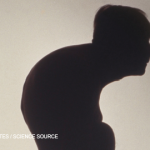A 55-year-old female patient with pain in multiple joints is referred to the office by her primary care physician. She complains of pain in both knees and both shoulders. She rates the pain at 7 on the pain scale. Her pain is worse at night after she gets off work. Soaking in her hot tub for about 45 minutes seems to reduce the pain to a 5 on a 10-point scale. She has taken acetaminophen, which does not help. She states she was unsteady on her feet a few times the previous week. She denies any weight gain or loss, dyspnea, dysuria, rashes or hair loss, dysphagia, stomach or abdominal symptoms, chest pain or mood changes. She has no known allergies. She has no other medical problems.
Past Medical History: The patient had a total hysterectomy five years ago for benign problems.
Family History: The patient’s mother had rheumatoid arthritis. She passed away last year in a car accident; this was not related to her rheumatoid arthritis. Her father passed away 10 years ago and had no rheumatic diseases. She has no siblings or children.
Social History: She does not smoke or consume alcohol.
Vital Signs: Her temperature is 98.7°F, height 5’6”, weight is 160 lbs., and blood pressure is 125/75 sitting. Patient is alert and oriented. She is well groomed.
The patient’s heart has a regular rate and rhythm, with no murmurs or rubs. Lymph nodes in her neck are not palpable to the touch. Skin has no scars or rashes on any extremities, face or trunk. Her coordination is good; she is able to touch her finger to her nose rapidly, and she is able to walk heel to toe. When the patient stretches her hands with palms turned inward over her head she has a small twinge on her right shoulder. Her deep tendon reflexes are normal in both lower extremities. When lightly touched by a pin with her eyes closed, she is able to identify the sensation of the pin on the upper and lower extremities. When asked, she correctly states the time, date and location. She is in a good mood even though she commented about pain.
Musculoskeletal Exam: Her gait and stance are normal. Her hands have Heberden’s nodes that are not tender, and proximal interphalangeal (PIP) and metacarpophalangeal (MCP) joints with full range of motion (ROM). There are no other bony deformities in upper or lower extremities. Her right shoulder has slight crepitus with passive motion but has full ROM and no pain and no palpable swelling. Other arm joints have no inflammation or tenderness. Her elbows have full ROM and no tenderness to palpation over joints or tendons. Her hips move well and are not tender. There is slight effusion and tenderness in both knees; her knees have full ROM. Her ankles and feet are normal. There is no joint laxity, and all joints are stable. Her neck and back are not tender and move well. Muscle strength and tone are good in both arms.
Assessment: The patient has possible general primary osteoarthritis. X-rays were ordered of shoulders and knees. Celecoxib 100 mg BID was recommended as needed and possible side effects, which are few, were discussed. I have also recommended ROM and quad strengthening exercises, which were demonstrated with patient participation and written information was given. Her neurologic exam is normal, but if her feeling of unsteadiness persists, she should see her primary care physician (PCP) for further evaluation. Her medical records are ordered from her PCP. She is scheduled to return to the office in four weeks.
How should this visit be coded using the 1997 musculoskeletal examination guidelines?

